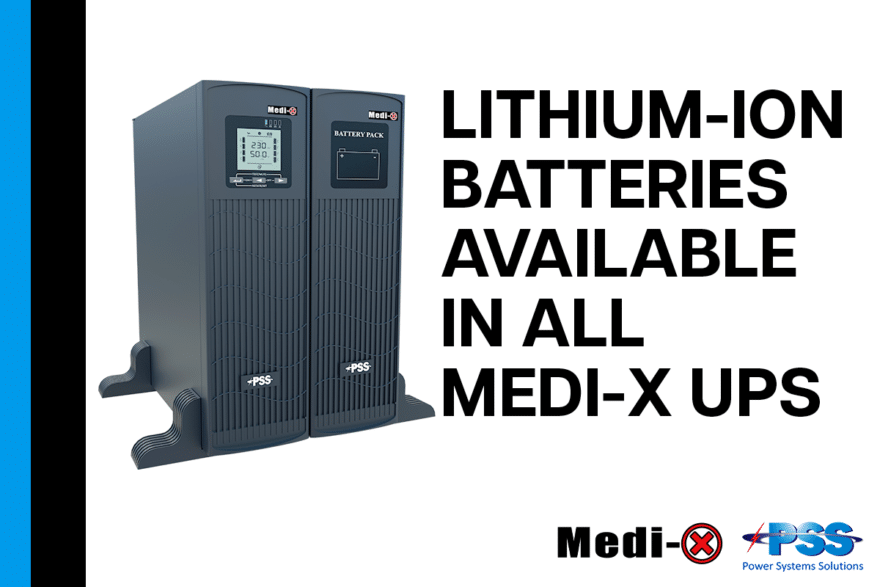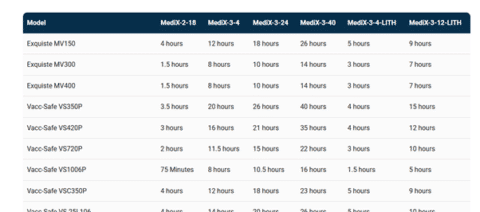At PSS Distributors, we’re committed to innovation and reliability in power solutions, especially for critical medical applications. That’s why we’re excited to announce the latest addition to our Medi-X range: lithium-ion UPS modules! These advanced systems offer unparalleled performance, extended run times, and peace of mind for safeguarding temperature-sensitive medical supplies.
The Evolution of Battery Technology
Our Medi-X range has long been a trusted choice for medical refrigeration power backup, offering 5-year design life and 10-year long-life (LL) battery options. Now, we’ve expanded our lineup with two brand-new lithium-ion UPS models: the MediX-3-4-LITH and MediX-3-12-LITH. These cutting-edge systems take reliability to the next level, offering:
- Longer Battery Life: Lithium-ion technology ensures a longer operational lifespan compared to traditional batteries.
- Enhanced Performance: Superior energy density allows for compact designs and extended runtimes.
- Greater Efficiency: Fast recharge times to minimize downtime after a power outage.
Tailored Solutions for Major Fridge Brands
We’ve made it easy to find the right solution for your medical refrigeration needs. Our Medi-X page now includes detailed runtime charts for all major fridge manufacturers, including the latest lithium-ion models. Whether you’re using a standard or high-capacity refrigerator, the Medi-X lithium range ensures your medical supplies stay protected.
*click table to take to view all run times
Not seeing your fridge model listed? Contact us! Our team can provide custom run times or help you select the ideal UPS solution for your specific requirements.
A Step Forward in Collaboration
The launch of our lithium-ion range also coincides with an exciting partnership. PSS Distributors is proud to collaborate with EuroChill to introduce a revolutionary fridge with a built-in UPS, powered by lithium-ion batteries. This innovative solution combines reliability and convenience, ensuring uninterrupted performance in one seamless unit.
Ready to Upgrade?
With our new lithium-ion Medi-X models, you’re investing in the future of medical refrigeration power backup. Explore the Medi-X range today and ensure your facility is prepared for any power disruption.
Visit our Medi-X page for more details, or learn about our collaboration with EuroChill here.



